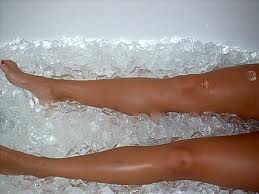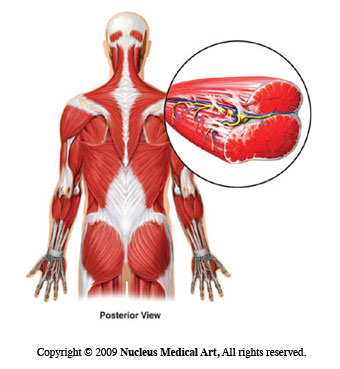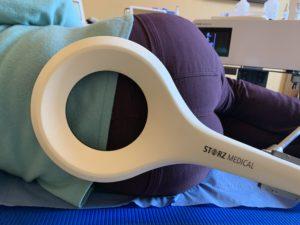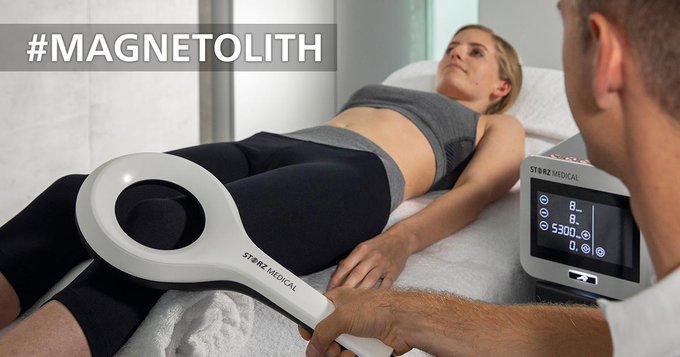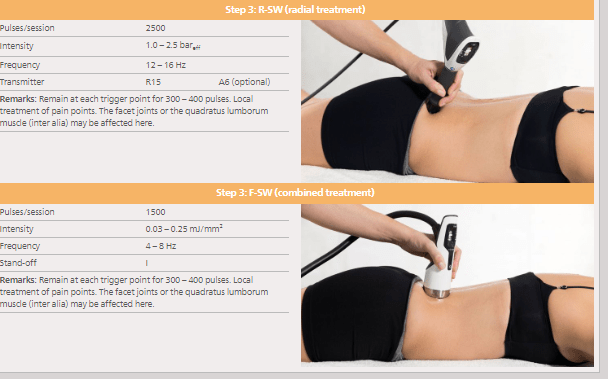[vc_row][vc_column width=”1/1″][vc_column_text]
LOW BACK PAIN TREATMENTS IN ATHLETES
Low back pain is one of the most common medical presentations in the general population. It is a common source of pain in athletes, leading to significant time missed and disability. The general categories of treatment for low back pain are medications and therapies.
EVIDENCE ACQUISITION:
Relevant studies were identified through a literature search of MEDLINE and the Cochrane Database from 1990 to 2010. A manual review of reference lists of identified sources was also performed.
RESULTS:
It is not clear whether athletes experience low back pain more often than the general public. Because of a aucity of trials with athlete-specific populations, recommendations on treatments must be made from reviews of treatments for the general population. Several large systemic reviews and Cochrane reviews have compiled evidence on different modalities for low back pain. Superficial heat, spinal manipulation, nonsteroidal anti-inflammatory medications, and skeletal muscle relaxants have the strongest evidence of benefit.
CONCLUSIONS:
Despite the high prevalence of low back pain and the significant burden to the athletes, there are few clearly superior treatment modalities. Superficial heat and spinal manipulation therapy are the most strongly supported evidence-based therapies. Nonsteroidal anti-inflammatory medications and skeletal muscle relaxants have benefit in the initial management of low back pain; however, both have considerable side effects that must be considered. Athletes can return to play once they have recovered full range of motion and have the strength to prevent further injury.
LINK TO RESEARCH EVIDENCE ON LOW BACK TREATMENTS IN ATHLETICS
The next article of treatments on back pain includes the comparisons between acupuncture, Tens, laser, massage, mobilization and spinal manipulation which in both articles they do not use the terms chiropractic or osteopathy.
COMPLEMENTARY AND ALTERNATIVE THERAPIES FOR BACK PAIN
Furlan AD, Yazdi F, Tsertsvadze A, Gross A, Van Tulder M, Santaguida L, Cherkin D, Gagnier J, Ammendolia C, Ansari MT, Ostermann T, Dryden T, Doucette S, Skidmore B, Daniel R, Tsouros S, Weeks L, Galipeau J.
Abstract
BACKGROUND:
Back and neck pain are important health problems with serious societal and economic implications. Conventional treatments have been shown to have limited benefit in improving patient outcomes. Complementary and Alternative Medicine (CAM) therapies offer additional options in the management of low back and neck pain. Many trials evaluating CAM therapies have poor quality and inconsistent results.
OBJECTIVES:
To systematically review the efficacy, effectiveness, cost-effectiveness, and harms of acupuncture, spinal manipulation, mobilization, and massage techniques in management of back, neck, and/or thoracic pain.
DATA SOURCES:
MEDLINE, Cochrane Central, Cochrane Database of Systematic Reviews, CINAHL, and EMBASE were searched up to 2010; unpublished literature and reference lists of relevant articles were also searched. study selection: All records were screened by two independent reviewers. Primary reports of comparative efficacy, effectiveness, harms, and/or economic evaluations from randomized controlled trials (RCTs) of the CAM therapies in adults (age ≥ 18 years) with back, neck, or thoracic pain were eligible. Non-randomized controlled trials and observational studies (case-control, cohort, cross-sectional) comparing harms were also included. Reviews, case reports, editorials, commentaries or letters were excluded.
DATA EXTRACTION:
Two independent reviewers using a predefined form extracted data on study, participants, treatments, and outcome characteristics.
RESULTS:
265 RCTs and 5 non-RCTs were included. Acupuncture for chronic nonspecific low back pain was associated with significantly lower pain intensity than placebo but only immediately post-treatment (VAS: -0.59, 95 percent CI: -0.93, -0.25). However, acupuncture was not different from placebo in post-treatment disability, pain medication intake, or global improvement in chronic nonspecific low back pain. Acupuncture did not differ from sham-acupuncture in reducing chronic non-specific neck pain immediately after treatment (VAS: 0.24, 95 percent CI: -1.20, 0.73). Acupuncture was superior to no treatment in improving pain intensity (VAS: -1.19, 95 percent CI: 95 percent CI: -2.17, -0.21), disability (PDI), functioning (HFAQ), well-being (SF-36), and range of mobility (extension, flexion), immediately after the treatment. In general, trials that applied sham-acupuncture tended to produce negative results (i.e., statistically non-significant) compared to trials that applied other types of placebo (e.g., TENS, medication, laser). Results regarding comparisons with other active treatments (pain medication, mobilization, laser therapy) were less consistent Acupuncture was more cost-effective compared to usual care or no treatment for patients with chronic back pain. For both low back and neck pain, manipulation was significantly better than placebo or no treatment in reducing pain immediately or short-term after the end of treatment. Manipulation was also better than acupuncture in improving pain and function in chronic nonspecific low back pain. Results from studies comparing manipulation to massage, medication, or physiotherapy were inconsistent, either in favor of manipulation or indicating no significant difference between the two treatments. Findings of studies regarding costs of manipulation relative to other therapies were inconsistent. Mobilization was superior to no treatment but not different from placebo in reducing low back pain or spinal flexibility after the treatment. Mobilization was better than physiotherapy in reducing low back pain (VAS: -0.50, 95 percent CI: -0.70, -0.30) and disability (Oswestry: -4.93, 95 percent CI: -5.91, -3.96). In subjects with acute or subacute neck pain, mobilization compared to placebo significantly reduced neck pain. Mobilization and placebo did not differ in subjects with chronic neck pain. Massage was superior to placebo or no treatment in reducing pain and disability only amongst subjects with acute/sub-acute low back pain. Massage was also significantly better than physical therapy in improving back pain (VAS: -2.11, 95 percent CI: -3.15, -1.07) or disability. For subjects with neck pain, massage was better than no treatment, placebo, or exercise in improving pain or disability, but not neck flexibility. Some evidence indicated higher costs for massage use compared to general practitioner care for low back pain. Reporting of harms in RCTs was poor and inconsistent. Subjects receiving CAM therapies reported soreness or bleeding on the site of application after acupuncture and worsening of pain after manipulation or massage. In two case-control studies cervical manipulation was shown to be significantly associated with vertebral artery dissection or vertebrobasilar vascular accident.
CONCLUSIONS:
Evidence was of poor to moderate grade and most of it pertained to chronic nonspecific pain, making it difficult to draw more definitive conclusions regarding benefits and harms of CAM therapies in subjects with acute/subacute, mixed, or unknown duration of pain. The benefit of CAM treatments was mostly evident immediately or shortly after the end of the treatment and then faded with time. Very few studies reported long-term outcomes. There was insufficient data to explore subgroup effects. The trial results were inconsistent due probably to methodological and clinical diversity, thereby limiting the extent of quantitative synthesis and complicating interpretation of trial results. Strong efforts are warranted to improve the conduct methodology and reporting quality of primary studies of CAM therapies. Future well powered head to head comparisons of CAM treatments and trials comparing CAM to widely used active treatments that report on all clinically relevant outcomes are needed to draw better conclusions.
Helen How, Registered Osteopath, 14 Craighall Gardens, Edinburgh EH6 4RJ
0131 551 1044 or Text /Call 07889304762 / I apologise if I do not pick up the phone immediately I usually manage to respond to a text or email at the end of the day or the beginning of a day. I do have students who come in to help me out but not on a regular basis. This is because I like to keep my costs affordable and yet provide a good long session with the use of the various forms of electrotherapy This is a unique service and not available anyway else in Scotland or most likely in England as well.
£38.00 for one hour including electrotherapy and any video on your condition you wish to see, or exercises
When you come in for your treatment it is a good idea if you send me your email address as I like to send through links, or files with medical information and exercises for you to enjoy at your own leisure and also it saves printing out paper.
[/vc_column_text][/vc_column][/vc_row]

